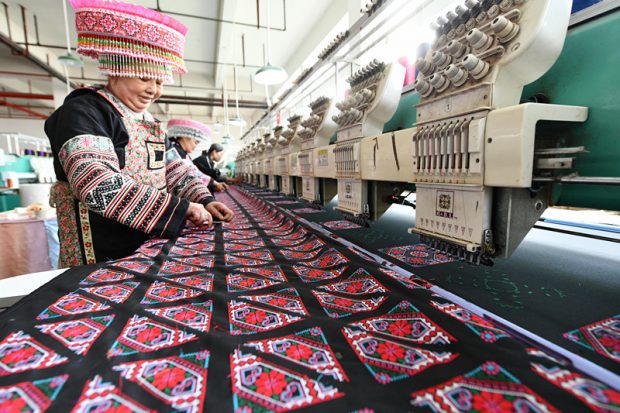
Over 80 million people lifted out of poverty in China in past six years

China has lifted 82.39 million people out of poverty over the past six years, cutting the poverty headcount ratio to 1.7 percent from 10.2 percent, according to the State Council Leading Group Office of Poverty Alleviation and Development. The office also indicated that the country’s three-year action plan on poverty alleviation got off to a good start. China lifted 13.86 million people out of poverty in 2018, lowering poverty headcount ratio by 1.4 percentage points from the year before. Over 10 million people were lifted out of poverty each year from 2013 to 2018.
China has made solid progress in poverty alleviation in areas of extreme poverty. In 2018, the country allocated an additional 12 billion yuan of poverty alleviation fund, or 60 percent of its additional fund in this aspect, to “three regions and three prefectures,” which include Tibet Autonomous Region, Tibetan regions in four provinces, southern parts of Xinjiang Uygur Autonomous Region, Liangshan Yi Autonomous Prefecture in Sichuan province, Nujiang Lisu Autonomous Prefecture in Yunnan province, and Linxia Hui Autonomous Prefecture in Gansu province. More focus has been put on deeply impoverished areas, including abreakthrough collaboration on poverty alleviation between the eastern and western regions, the “pairing assistance” program that allows rich regions of the country to offer financial and personnel support to extremely impoverished regions, and assigning officials from central government departments to designated rural areas for targeted poverty alleviation
An estimated 1.3 million people in the “three regions and three prefectures” got rid of poverty in 2018, with the poverty headcount ratio dropping 6.4 percentage points, 3.3 percentage points higher than the average decline in the western region. An estimated 4.8 million people in 334 deeply impoverished counties were lifted out of poverty in the same year. Last year, 9 provinces and cities in east China provided financial assistance of 17.7 billion yuan and donations of 4.8 billion yuan from all sectors of society to impoverished western regions, and helped 1.44 million people escape from poverty by means of employment transfer. A range of major poverty alleviation measures have been implemented, including poverty alleviation by fostering distinctive industries, advancing relocation, carrying out ecological restoration, strengthening education and improving social security.
The country has focused efforts on supporting poor farmers in poverty-stricken areas through fostering planting and breeding industries. It has made great progress in reducing poverty by promoting photovoltaic power facilities and e-commerce, and improved the mechanism of helping impoverished households reduce poverty. By means of employment transfer, the country created employment opportunities for 2.59 million people in 2018. It established more than 30,000 poverty alleviation workshops, helping 770,000 registered impoverished people get employed in areas closer to their home. The country has improved the basic conditions of poorly built and low performing rural schools providing compulsory education in poor areas, and made greater efforts to control the proportion of children dropping out of school.
Poverty alleviation through medical security has also been implemented. The program to provide medical treatment to impoverished people with serious diseases in rural areas was expanded to cover 21 kinds of diseases and over 10 million poor people have received treatment. China has further reduced the ratio of self-paid health care costs for poor patients, and improved medical treatment conditions in poor areas. In addition, more than 500,000 people living under China’s poverty line have been employed as government-paid forest rangers through ecological poverty-relief programs. China will beat poverty with precision poverty alleviation in 2019. The country will be committed to ensuring that the impoverished rural people have stable access to adequate food and clothing, compulsory education, basic medical services and housing, and to achieving indices of major basic public services close to the national average level. The country will intensify poverty alleviation in areas of extreme poverty like the “three regions and three prefectures” and ensure social safeguards for the most vulnerable groups. This year, over 10 million people will be lifted out of poverty and around 300 impoverished counties are expected to get rid of poverty, said Liu Yongfu, director of the State Council Leading Group Office of Poverty Alleviation and Development.
By Gu Zhongyang & Yu Jingxian
(People’s Daily)


